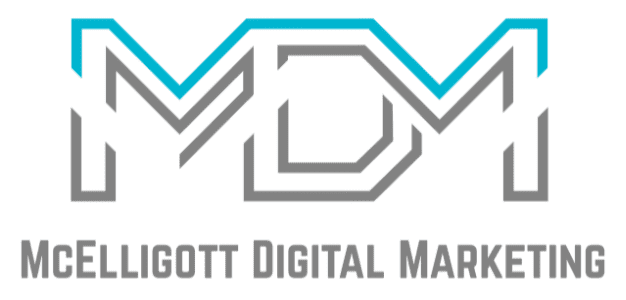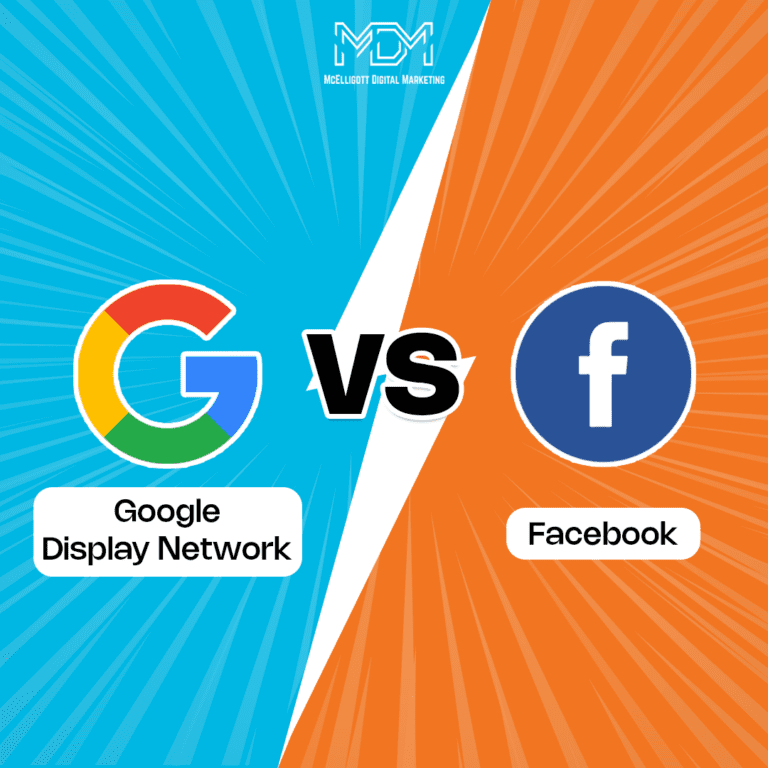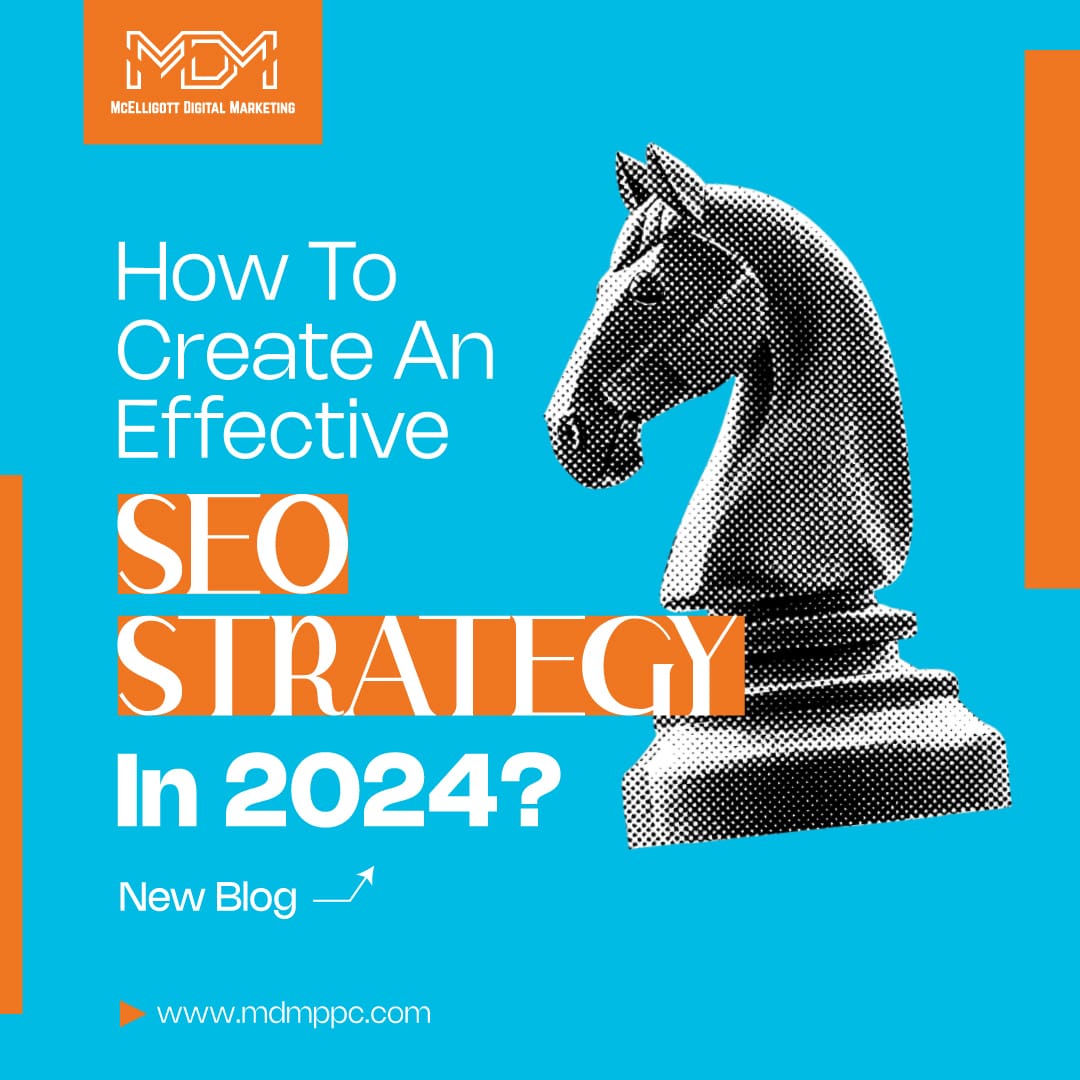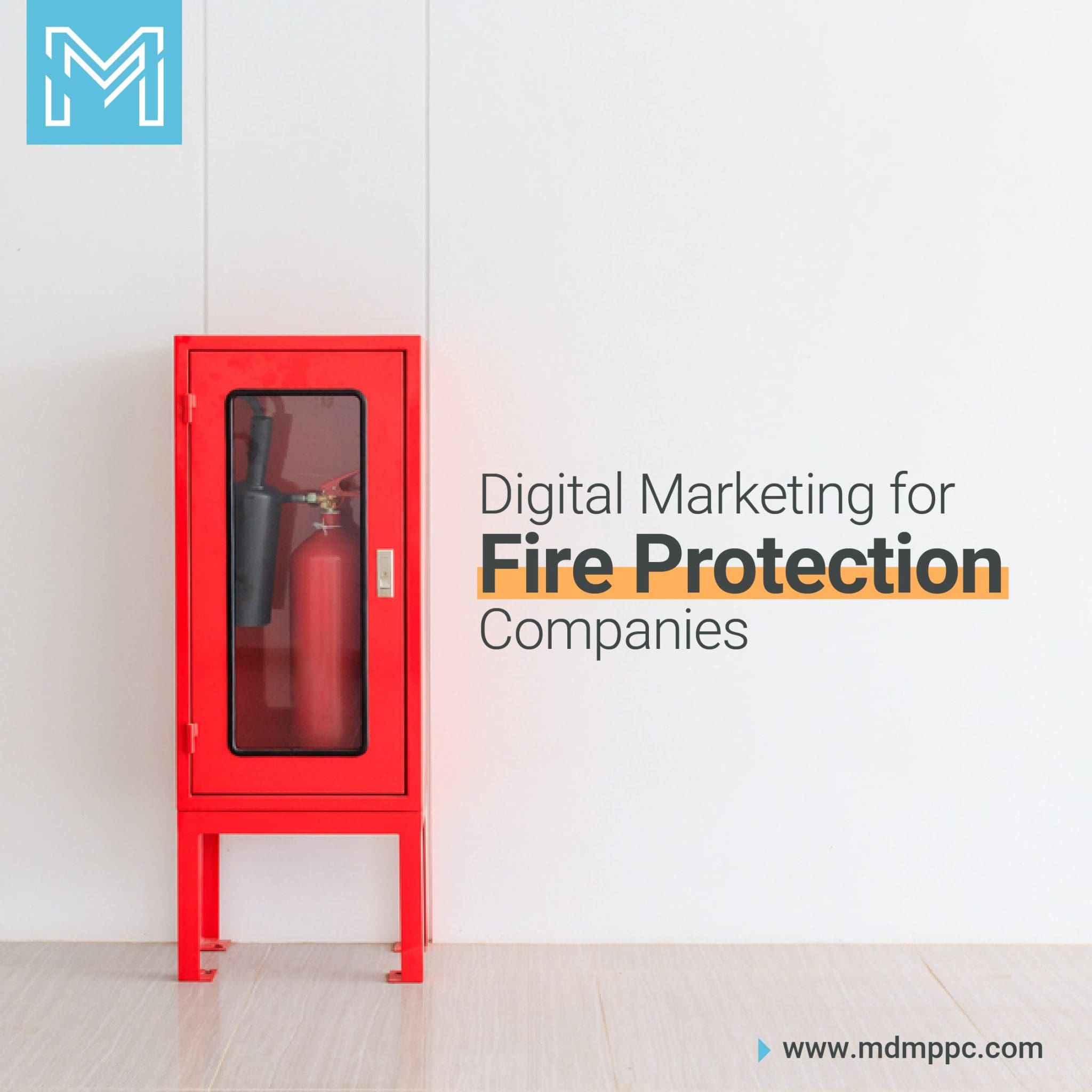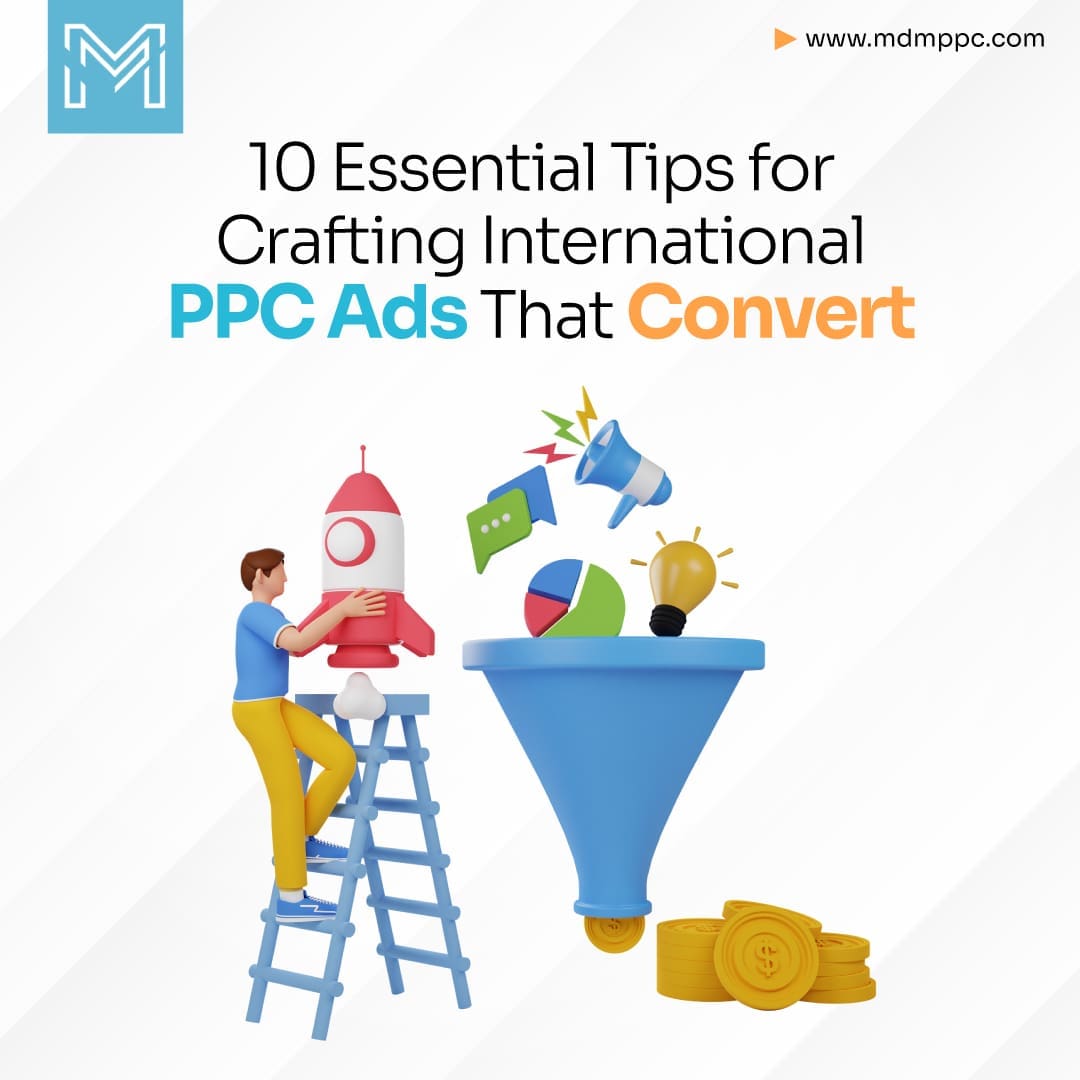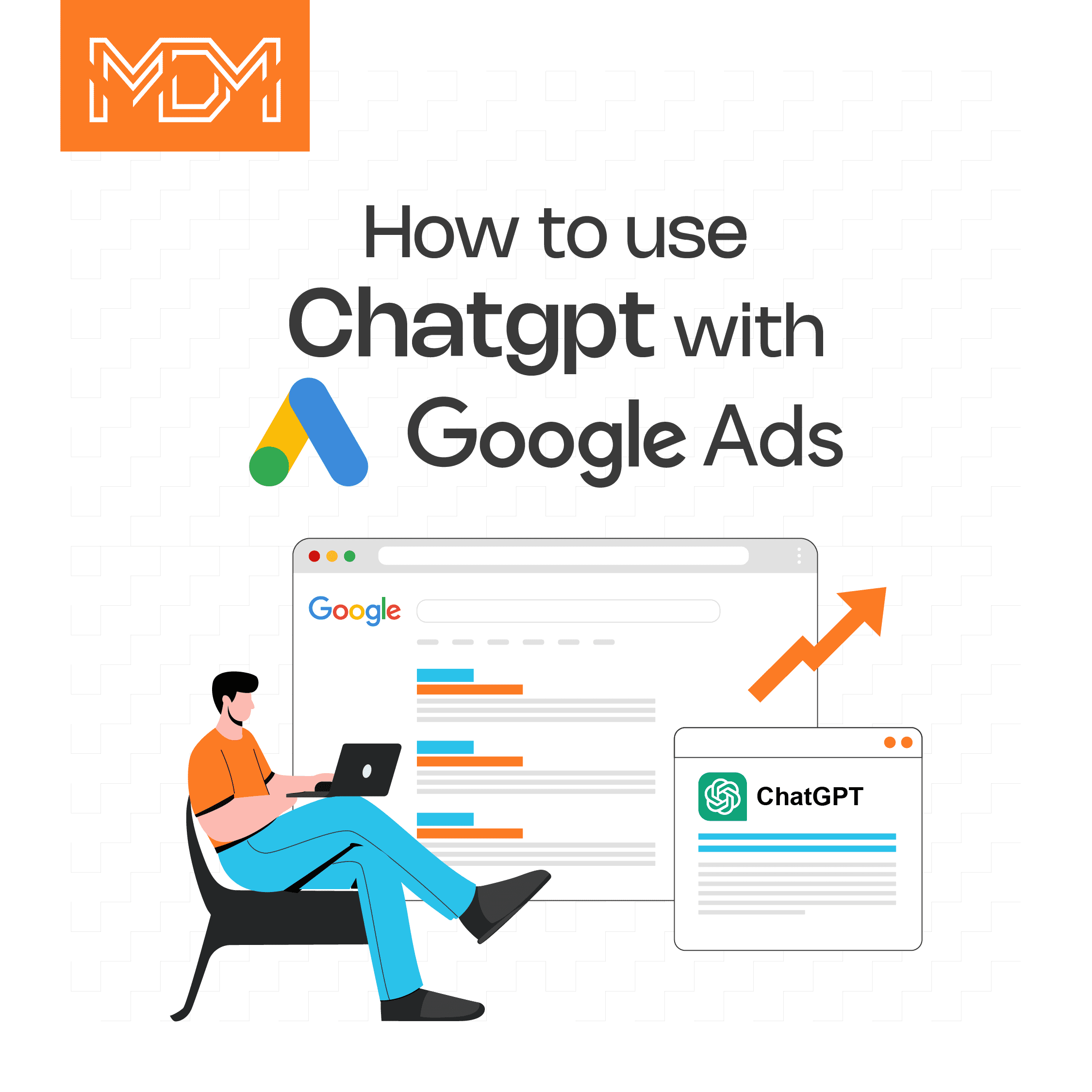To reach your audience, you need the right advertising platforms, and this sparks the debate about Google Display Network vs Facebook ads. Google Display Network (GDN) and Facebook ads offer unique benefits for different goals. For example, Google Display Network’s ad formats are far better than Facebook’s.
Since both companies make most of their money from ads- 96% for Google and 86% for Facebook- let’s compare their advertising platforms. We will focus on Facebook Ads versus Google Display Network (GDN), which accounts for 20% of Google’s ad revenue. Both deliver on native-style ads, reaching people while they browse content.
GDN focuses on placing visually attractive ads on websites, apps, and YouTube. Facebook ads are known for highly targeted campaigns on its social media platforms.
To choose the right platform, you need to understand your audience, budget, and goals.
In this blog, we’ll compare Google ads vs Facebook ads and cover the pros, cons, costs, and conversion rates of both. It will help you decide which platform works best for you.
What is Google Display Network?
The Google Display Network (GDN) is a group of millions of websites, apps, and videos. These channels show Google ads to a large global audience. Together, the GDN reaches a large portion of internet users worldwide. Advertisers use Google Ads to create and display ads, connecting with millions of potential customers.
The GDN helps businesses reach broad and diverse audiences. It shows ads on a wide range of websites and platforms.
Difference between Google Display Network and Google Search Network
Unlike search ads, Google Display Network targets users who aren’t actively looking for products or services. Ads appear on relevant websites and blogs based on target keywords. This approach increases brand visibility, builds awareness, and drives sales.
The GDN and the Google Search Network (GSN) differ in where ads appear. GSN ads show up on Google Search and partner sites when people are actively searching for specific keywords. Here’s what a GSN ad looks like:
On the other hand, GDN ads appear on websites, apps, and videos users visit, even if they aren’t searching for your product at that time. Here’s what a GDN ad looks like:
What are Facebook ads?
Facebook ads need no introduction because they keep appearing while we’re scrolling through the platform. This is again similar to GDN ads because there’s no active search that triggered the Facebook ad.
Facebook ads are paid advertisements run through Facebook’s platform. These ads appear in places like Facebook’s feed, Messenger, or even on other apps and websites. They come in different formats, such as images, videos, or slideshows. Businesses target these ads to specific audiences.
Unlike free posts, paid ads let you reach important people for your business. You can choose your target audience based on broad or detailed preferences. You also control your budget. You can set a total amount, a daily budget, or a cost per result. You can even pay for specific actions, like clicks or views.
Facebook ads are highly customizable. The platform has detailed information about users. This lets you target ads based on features like gender, age, marital status, job, interests, or location. With so many options, Facebook ads help you connect with the right people.
Google Display Network vs Facebook: Pros and Cons
1. Advertising reach
Both Google Display Network (GDN) and Facebook have large reach. GDN connects with more unique people around the world. However, Facebook has more page views. Fewer people spend more time on Facebook, so Facebook shows ads to the same users multiple times.
2. Growth and adoption by advertisers
Facebook’s advertising growth has been strong, but it hasn’t kept up with the rapid growth in users. Google Display Network, on the other hand, continues to grow steadily and attracts more advertisers.
3. Ad performance
Facebook Ads can be highly effective, but their performance can be inconsistent. An ad that works well for a while may suddenly stop delivering results. Some users also face issues like account suspensions without clear reasons. GDN ads tend to be more stable. As long as the targeting is done correctly, the ads perform predictably.
Facebook ads have low click-through rates (CTR), averaging less than 0.05%. This is half the usual CTR for banner ads. The reason is Facebook’s limited ad formats and targeting options. These are important for making ads relevant. Google, on the other hand, offers better analytics and reporting. This helps GDN achieve nearly 10 times higher CTR than Facebook.
4. Ad targeting options
Facebook lacks some of the important targeting features that GDN provides. Facebook doesn’t offer mobile ads, retargeting, or ads on partner websites. GDN, however, offers all these options, along with keyword-based targeting for display ads.
5. Supported ad formats
Facebook only has two ad types- standard image ads and sponsored stories. GDN offers more choices, including text ads, image ads, flash ads, in-video ads, and ads for mobile websites and games.
6. Ease of use
Facebook Ads are very easy to use, even for beginners. You can quickly start an ad by clicking the “boost post” button. This makes it simple for businesses to get their ads in front of people. However, because it is easy to use, many businesses use it, which leads to more competition.
GDN is more complex. It requires a better understanding of targeting and bidding strategies. While it equips you with detailed tools, it is too much for people new to online advertising. It is better suited for advertisers with more experience.
7. Targeting capabilities
Facebook Ads allow advertisers to target users based on detailed information, such as age, gender, interests, and location. This makes it a great platform for businesses looking to connect directly with specific people. Ads can also be shared.
GDN uses contextual targeting. It shows ads on websites and apps that match the content users are viewing. For example, if someone is reading about travel, ads for vacation packages appear. This is effective for reaching people who are casually interested in certain topics.
8. Cost and budgeting
Facebook lets you set budgets and choose how much you want to spend per day or result. You can start with a small budget and increase it over time. However, as more businesses use Facebook Ads, the cost-per-click can rise, making it more expensive.
GDN generally offers lower costs because there is less competition. You can also set budgets and choose different pricing models. However, the cost-effectiveness of GDN depends on the targeting and the quality of the websites where the ads are displayed.
Conclusion
Both Google Display Network (GDN) and Facebook Ads have their pros, but GDN offers more benefits. It takes you to a wider audience, has higher click-through rates, and provides better targeting and ad options.
While Facebook Ads are easy to use and work well for social engagement, they lack some features that GDN has. GDN gives advertisers more tools to improve ad performance and reach the right people. If we are to pick a side, Google Display Network is a stronger choice for businesses looking for a more effective and flexible advertising platform compared to Facebook Ads.
Need help with running ROI-driven Google ads for your business? We at McElligott Digital Marketing take pride in supporting small and local businesses to get more leads and brand awareness with a tight marketing budget.
Book your FREE consultation with our Google Ads specialists at (833) 772-4897.
Google Display Network vs Facebook FAQs
1. Which platform offers better options for retargeting campaigns?
Google has more retargeting options through its Display Network and YouTube. Facebook focuses more on social interactions for retargeting.
2. How do Google Shopping Ads compare to Facebook’s product catalog ads?
Google Shopping Ads target searchers based on search intent, while Facebook’s product catalog ads target people based on the interests and behavior they have shown.
3. Which platform provides better ROI for e-commerce product advertising?
Google provides you with higher ROI because it targets users who are actively searching for products. But here we’re talking about search ads. Facebook is better for awareness and retargeting.
4. How do targeting options differ for product ads on Google vs. Facebook?
Google targets based on search intent. Facebook targets based on demographics, interests, and behaviors, even if users aren’t searching.
5. What strategies can businesses use to optimize campaigns across both Google and Facebook ad platforms?
Use Google for search ads and Facebook for social targeting and retargeting. Align messaging and track performance on both platforms.
6. How can advertisers effectively allocate budgets between Google and Facebook ads?
Spend more on Google for high-intent searches. Use Facebook for brand awareness and retargeting. Adjust based on performance.
7. What are the best practices for creating cohesive multi-platform ad campaigns?
You need to keep messaging and visuals consistent. Optimize ads for each platform. Track results and adjust bids, budgets, and creatives.
